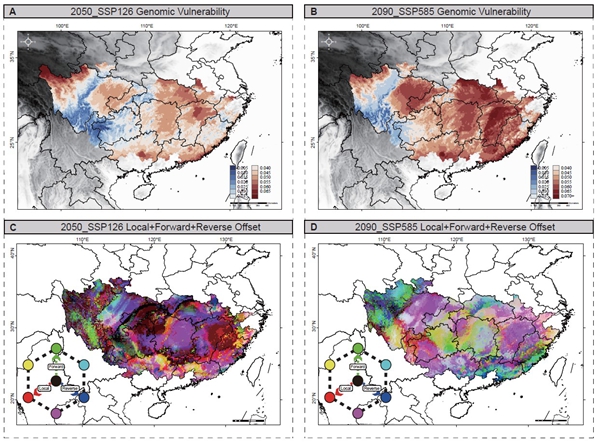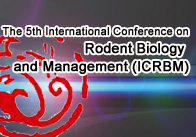On July 10, 2025, at 2:00 Beijing Time, the international top academic journal Science Advances online published the latest research results completed by the team of Professor LI Ming from the Institute of Zoology, Chinese Academy of Sciences, in cooperation with the team of Professor LI Jing from Sichuan University and the team of Professor LI Jinhua from Anhui University, entitled “Integrating population genomics and environmental data to predict adaptation to climate change in post-bottleneck Tibetan macaques”.This study provides a new perspective for species conservation under climate change.
The results show that the Tibetan macaque is divided into two genetic groups: eastern China (including the Huangshan population in Anhui, the Wuyishan population in Fujian, and the Mangshan population in Hunan) and western China (including the Sichuan population, the Wumengshan population in Yunnan, and the Fanjing Mountain population in Guizhou). Among them, the Huangshan population has the lowest genetic diversity and high inbreeding, which may reduce the adaptability of this population to environmental fluctuations. In addition, based on the PSMC results, it is shown that both eastern and western groups have been affected by historical climate fluctuations, leading to a sharp decline in effective population size.
Secondly, the GONE analysis of the recent historical dynamics of the population found that the eastern and western groups experienced a severe population bottleneck about 1,100 years ago. It was found that the highly deleterious mutations in the eastern population were lower than those in the western population, but the moderately deleterious mutations were higher. It is speculated that the eastern group may be mainly affected by the combined effects of genetic drift and purifying selection. Although purifying selection may reduce the frequency of highly deleterious mutation sites, some moderately deleterious mutation sites will randomly drift to high frequencies, leading to the failure of purifying selection. Therefore, this study believes that the random fixation of moderately deleterious mutation sites will cause long-term damage to the adaptability to future climate change.
Finally, the assessment and prediction of the ecological and genomic vulnerability of species under future climate change based on intraspecific variation show that temperature fluctuation is an important environmental factor affecting the habitat selection of Tibetan macaques. In addition, with the intensification of climate change, the Qinling region may become a climate refuge for western populations in the future, while the eastern populations may suffer serious loss of suitable habitats due to highly fragmented habitats. At the same time, based on the analysis of GF and GDM models, it is shown that the eastern population, especially the Huangshan population, has a higher genetic offset in the future. Considering that the Huangshan population has a high level of inbreeding, low genetic diversity, and high ecological and genomic vulnerability, this population may face high climate change risks in the future.
In summary, this study believes that the IUCN Red List may underestimate the threat level faced by the current Tibetan macaque population and suggests upgrading its protection level. In addition, considering that the eastern group, especially the Huangshan population, cannot mitigate the impact of climate change by migrating or diffusing to find more suitable habitats, it is recommended to build ecological corridors in the Huangshan, Mangshan, and Wuyishan National Park areas in the future to ensure the connectivity of the eastern population's habitats and better play the effectiveness of national parks in protecting this species.

Figure. Predicted genetic offset for future climate change under the SSP 1-2.6 scenario in 2050 and the SSP 5-8.5 scenario in 2090 (image by LI Ming’s Lab)

